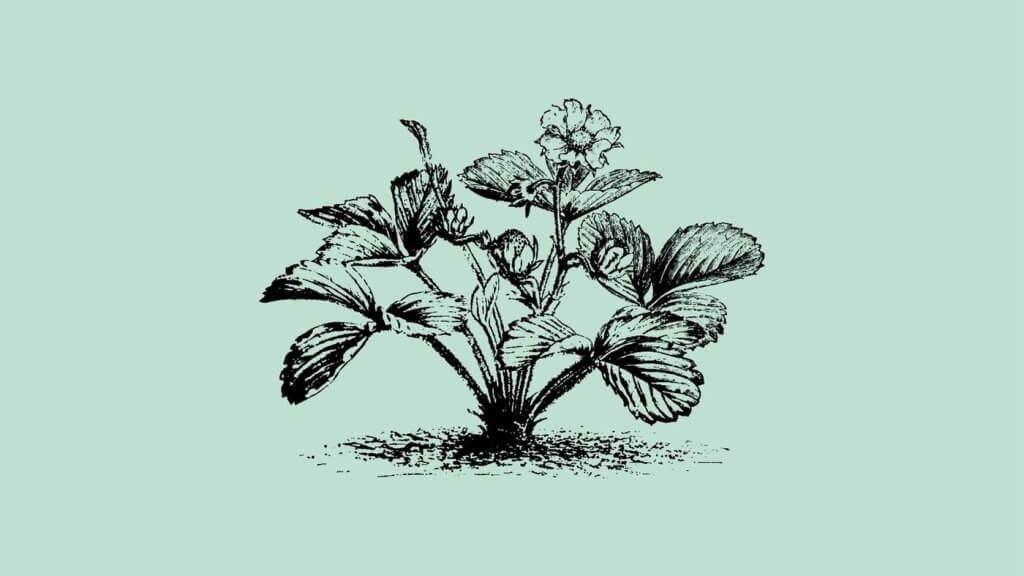Virginia strawberry, also known by its scientific name Fragaria virginiana, is a wild edible strawberry species. Although red, sweet, and therefore similar to garden variety strawberries, they are smaller in size.
Fragaria Virginiana Plant Profile
You might recognize this wild strawberry by its common names:
- Virginia strawberry
- Wild strawberry
- Common strawberry
- Mountain strawberry
The Fragaria virginiana is part of the rose (Rosaceae) family and Fragaria genus.
There’s quite a history to this one, as the Virginia strawberry is one of the two species of wild strawberry hybridized to create the modern, commercial, and domesticated garden strawberry (Fragaria × ananassa).
What Are You Foraging For Right Now?
We're thrilled to hear your ideas. What would you like to submit today? Feel free to share your thoughts and experiences with us.
Check our video below for more information on how to identify and use wild strawberries in the kitchen.
Interestingly, most cultivars of Fragaria virginiana are hybridized, containing traits of both species.
There are four recognized subspecies of this genus, including:
- Fragaria virginiana subsp. glauca (formerly known as F. ovalis)
- Fragaria virginiana subsp. grayana
- Fragaria virginiana subsp. platypetala
- Fragaria virginiana subsp. virginiana
As a herbaceous, deciduous, ground-hugging plant with a perennial, fibrous root system, Fragaria virginiana can grow to an average height of 100 mm (4 in) tall.
Be ready to pick no later than June. The most common bloom time is late spring to early summer, from April, May, and June.
What Does Virginiana Strawberry Look Like?
Its leaves are hairy leaf petioles, up to 6 in long, each with a single trifoliate leaf. Notice dark green on top and pale green underneath.
Other distinguishing factors are the oval-shaped leaves with coarse teeth along the edge (but not the bottom) and a five-petaled white flower with numerous pistils. Look for the yellow-anthered stamens that surround the flower and pistils.
Eventually, the seeds of the pistils in the center of the flower will become dark-red fruit (achenes).
Although the fruit of the wild strawberry is noticeably smaller than the garden variety (Fragaria × ananassa), it is still sweet and tasty.
Find out how to distinguish mock strawberries from garden strawberries in this article.
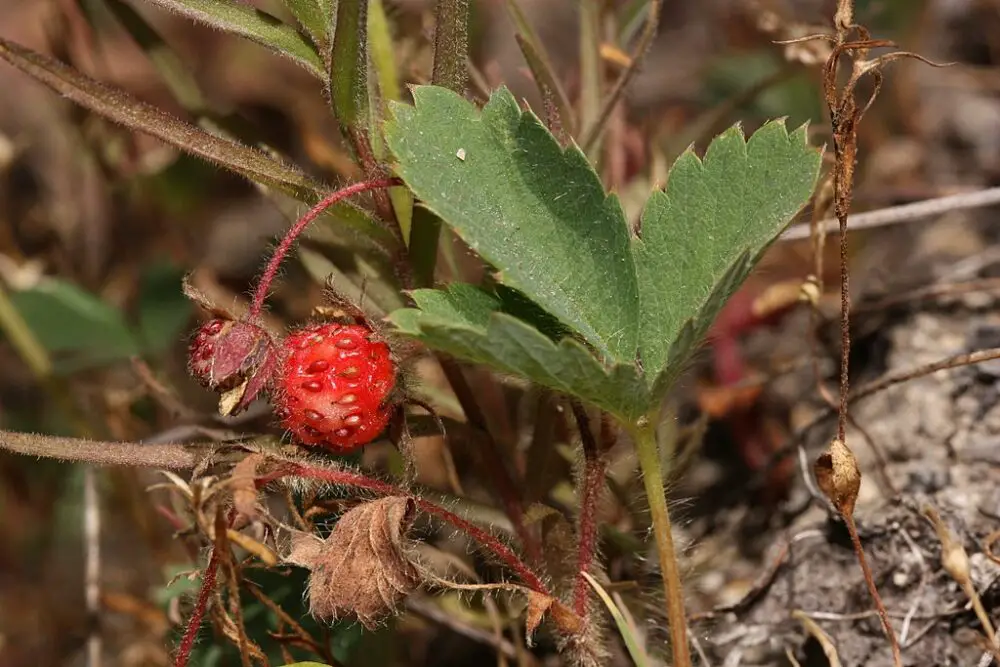
Where Does Virginia strawberry Grow?
The Virginia strawberry’s native range is North America. But you can also find this North American native plant in the eastern United States in woods, on hillsides, and in other shady areas. Maine to Florida and west to Ohio and Louisiana are common locations.
Also, be prepared to find this plant in hedgerows, woodlands, and fields from Nova Scotia to Florida and west to Minnesota and Texas.
Are Virginiana Strawberries Edible?
Not only are Virginia strawberries edible, but they’re super tasty. When lucky enough to happen upon this tasty wildflower when foraging, be sure to pick a few or twenty.
Make sure you are choosing this wild strawberry and not any potentially toxic lookalikes. Also, remember to wash them thoroughly before eating.
It’s also important to remember that the strawberry’s edible portion is the flower’s central portion (receptacle). It enlarges drastically with maturity and will be covered with dried and embedded seed-like fruit.
You may notice that similar wood strawberry (F. vesca) has seed-like fruit on the surface, which is not embedded.
How to Distinguish Fragaria Virginiana from Other Wild Strawberries such as F. Vesca
When you remember a few key factors, distinguishing Fragaria virginiana from other wild strawberries is easier than you think.
- Check out the size of the plant and berries. For example, Fragaria virginiana is small, with small leaves and small red berries.
- The seeds of F. vesca fruit are raised on the surface, whereas the F. virginiana appears more globular with seeds in the shallow pits.
- You’ll notice that the F. vesca has fewer flowers than F. virginiana and usually rises above the leaves. In contrast, F. virginiana flower stems are commonly shorter than the leaf stems.
- The F. vesca leaflets have minimal hair or fuzz and are more prominently veined with large teeth. Whereas the F. virginiana is hairier overall and more softly veined and toothed.
- You’ll find the F. vesca growing in moister, shadier habitats than F. virginiana, which prefers full sun.
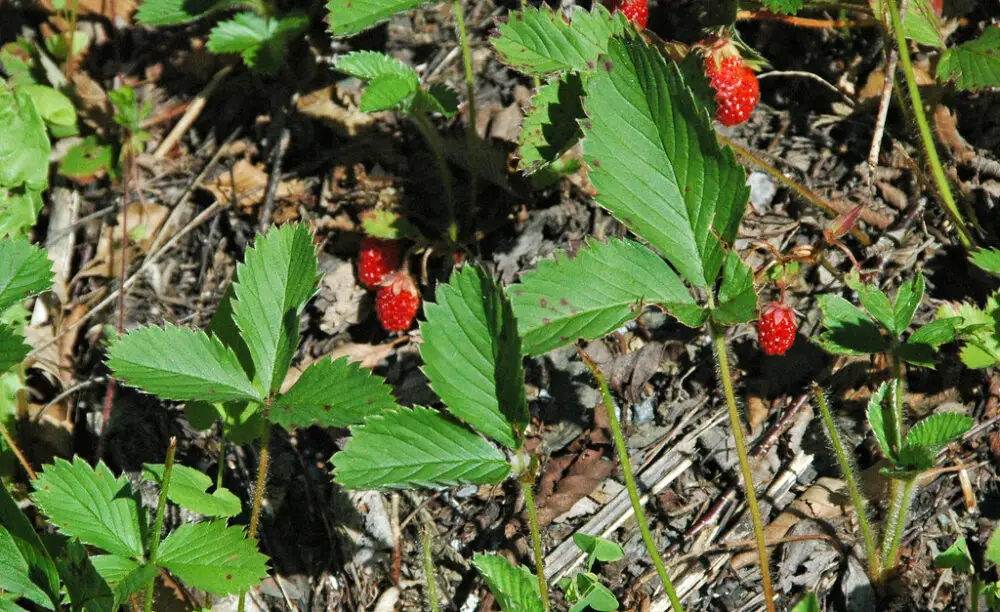
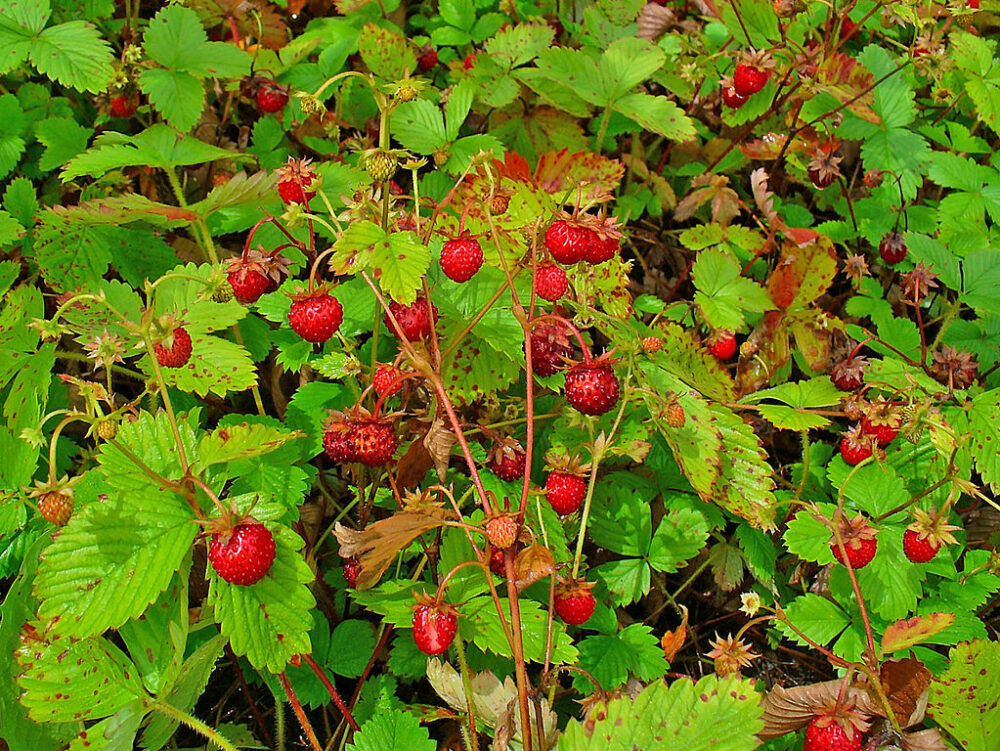
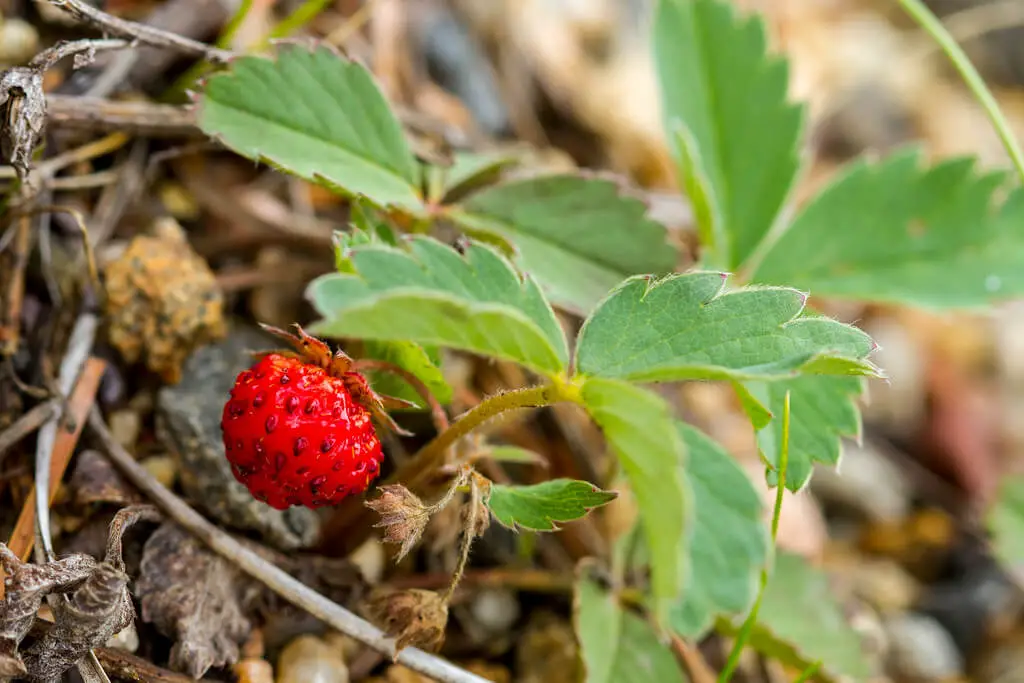

Fragaria Virginiana Foraging Tips
- Look for patches of Fragaria virginiana in early to mid-summer. You want to pick the deep red berries during this time when they are ripe and ready to eat.
- Ensure you don’t miss these tasty but miniature morsels when foliage becomes overgrown.
- Look for Virginia strawberries in full sun rather than in shadier spots.
- Know where they grow based on your geographical location.
- Gently pick the berries from their stems. Be careful not to be too rough. Because strawberry plants are perennial and will come back yearly (for about six years), you don’t want to damage the plant.
- Rinse the berries in cold or lukewarm water and enjoy immediately. You can also cook them in various dishes or store them in the fridge for later.
- Virginia strawberries can also be frozen for up to six months. But you need to place them in a freezer-safe container or bag.
Getting into the great, wet outdoors in search of edible plants, herbs, fruits and fungi is one of Sarah’s favorite outdoor pursuits. She thinks there’s nothing better than combining her passion for hiking with the start of the foraging season. Sarah’s definitely not afraid of a little rain and dirt, it’s all part of the fun.

